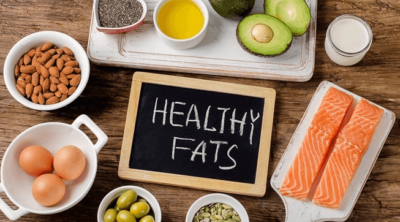
The calories in sliced ham depend on how much fat content is concentrated within the meat. Learn about which ham cuts qualify as healthier than most and what are the pros and cons of including this kind of meat in one’s diet.
The word ‘ham’ is taken from the old English word ‘ham‘ or ‘hom‘, which translates into the hollow bend of the knee. It is a cut of meat from the hind leg that is taken from certain animals, but most commonly from the thigh portion of a pig. Ham is mostly cured and served in many ways and can be eaten either cooked or raw. There are different types of meat that are equally delicious and juicy, like bacon, which are much-loved strips of fatty meatiness that go great with of course an ideal American breakfast.
Types of Ham
Depending on where ham is available, the name/type changes as we move from one region to the next.
- Butt ham
- Dry cured/wet cured hams
- Center ham slice
- Deviled ham
- Spiral sliced ham
- Shank ham
Ready-to-Eat Ham
- Ardennes ham
- Bradenham ham
- Black Forest ham
- Cottage ham
- Coppa
- Capocolla
- Canned ham
- Culatello
- Honey-cured ham
- Irish ham
- Jamon Serrano ham
- Kentucky ham
- Prosciutto ham
- Picnic ham
- Smithfield ham
- Sugar-cured ham
- Virginia ham
- Westphalian ham
- York ham
Nutritional Information
| Ham Nutrient Chart | ||
| Nutrient Content | Ham Leg (Roasted rump half) – 100 g, 252 calories |
Ham Sliced (Extra Lean) – 100 g, 107 calories |
| Carbohydrates | 0 g | 1 g |
| Fat | 14.3 g | 3 g |
| Saturated Fat | 5.3 g | 1 g |
| Protein | 28.9 g | 19 g |
| Cholesterol | 96 mg | 45 mg |
| Sodium | 62 mg | 1060 mg |
| Phosphorus | 27% | 288 mg |
| Copper | 5% | 0.5 mg |
| Potassium | 374 mg | 649 mg |
| Niacin | 23% | 5.7 mg |
| Zinc | 19% | 1.9 mg |
| Pantothenic Acid | 6% | 0.7 mg |
| Thiamin | 50% | 0.3 mg |
| Calcium | 1% | 6.0 mg |
| Vitamin B6 | 16% | 0.4 mg |
| Magnesium | 7% | 0 mg |
| Iron | 6% | 07 mg |
Health Benefits
Pros
- Good source of potassium, selenium, magnesium, vitamin B, and other minerals and vitamins.
- Rich source in protein and iron.
- Avoids abrupt cardiac arrests.
- Strengthens the immune system due to the presence of zinc.
- Can help with problems like hypertension and diabetes, even obesity (if eaten as lean/extra lean).
- Polyunsaturated fat present in ham can help counter the effects of arrhythmia.
Cons
- Can contain extremely large amounts of fat if not a lean/extra-lean option.
- High in cholesterol.
- It can double one’s chances of getting arthritis.
- Increases the risk of having Alzheimer’s disease.
- Can increase the risk of breast cancer if more than one serving is eaten in a day.
- Increases the risk of osteoporosis and even bowel cancer.

